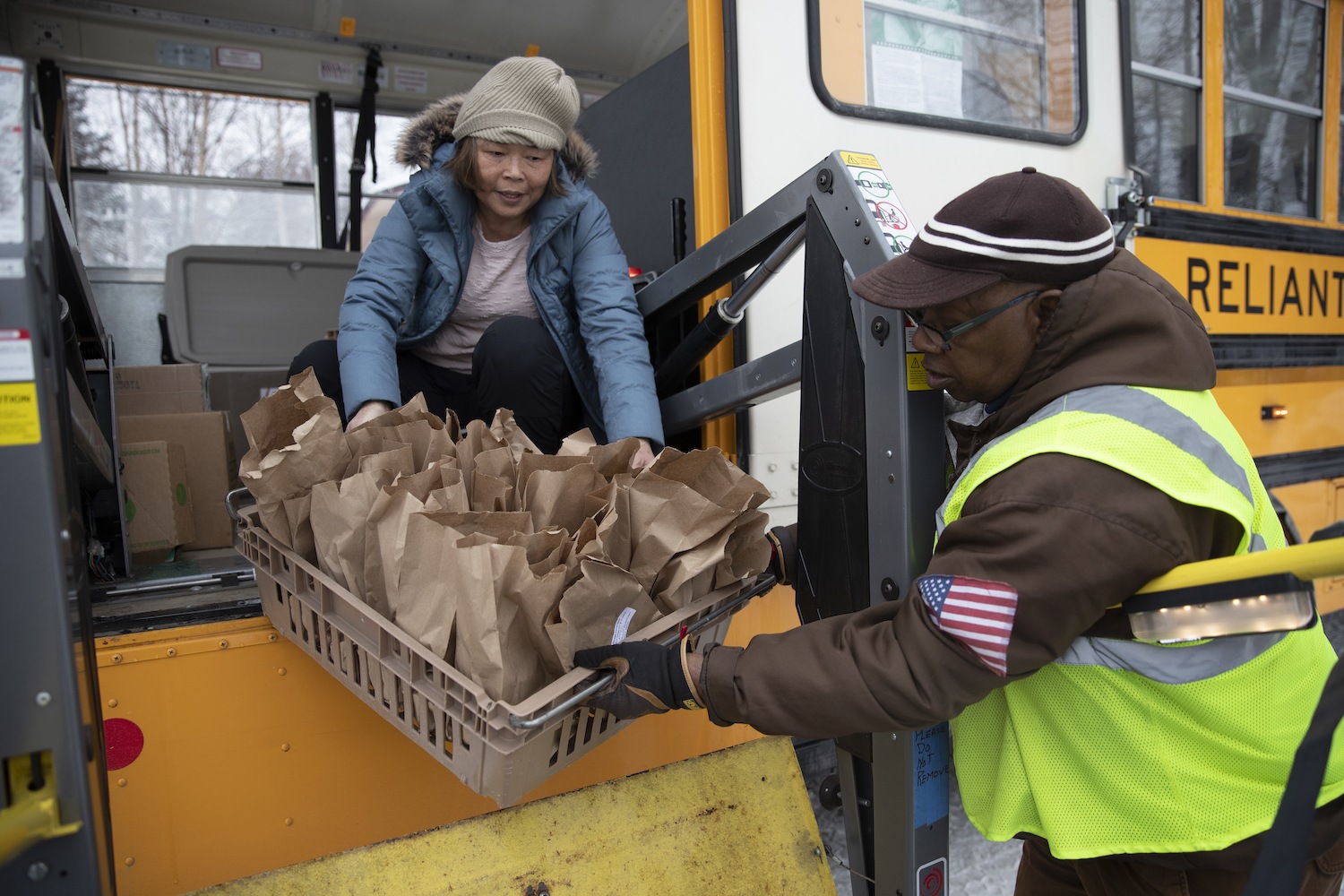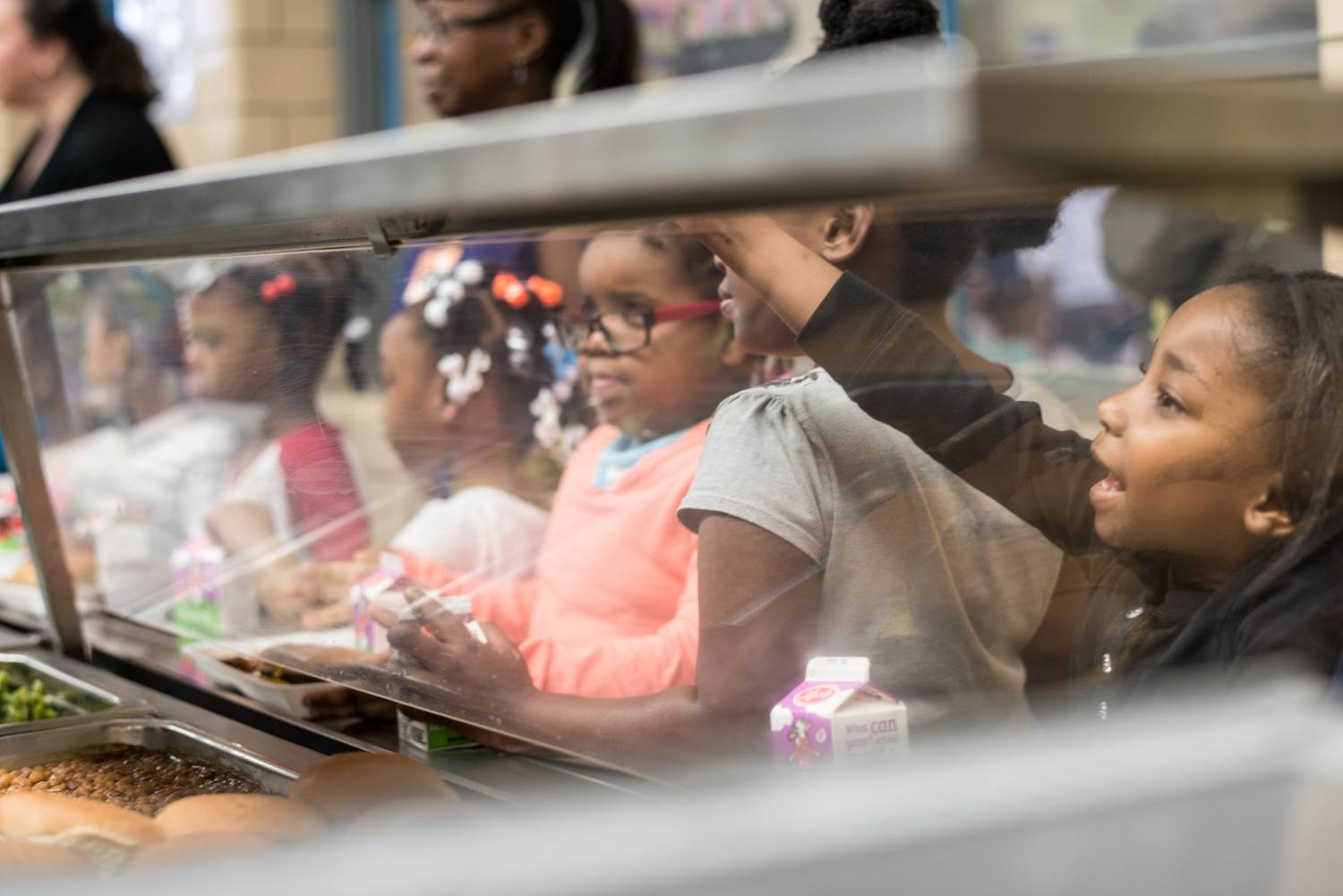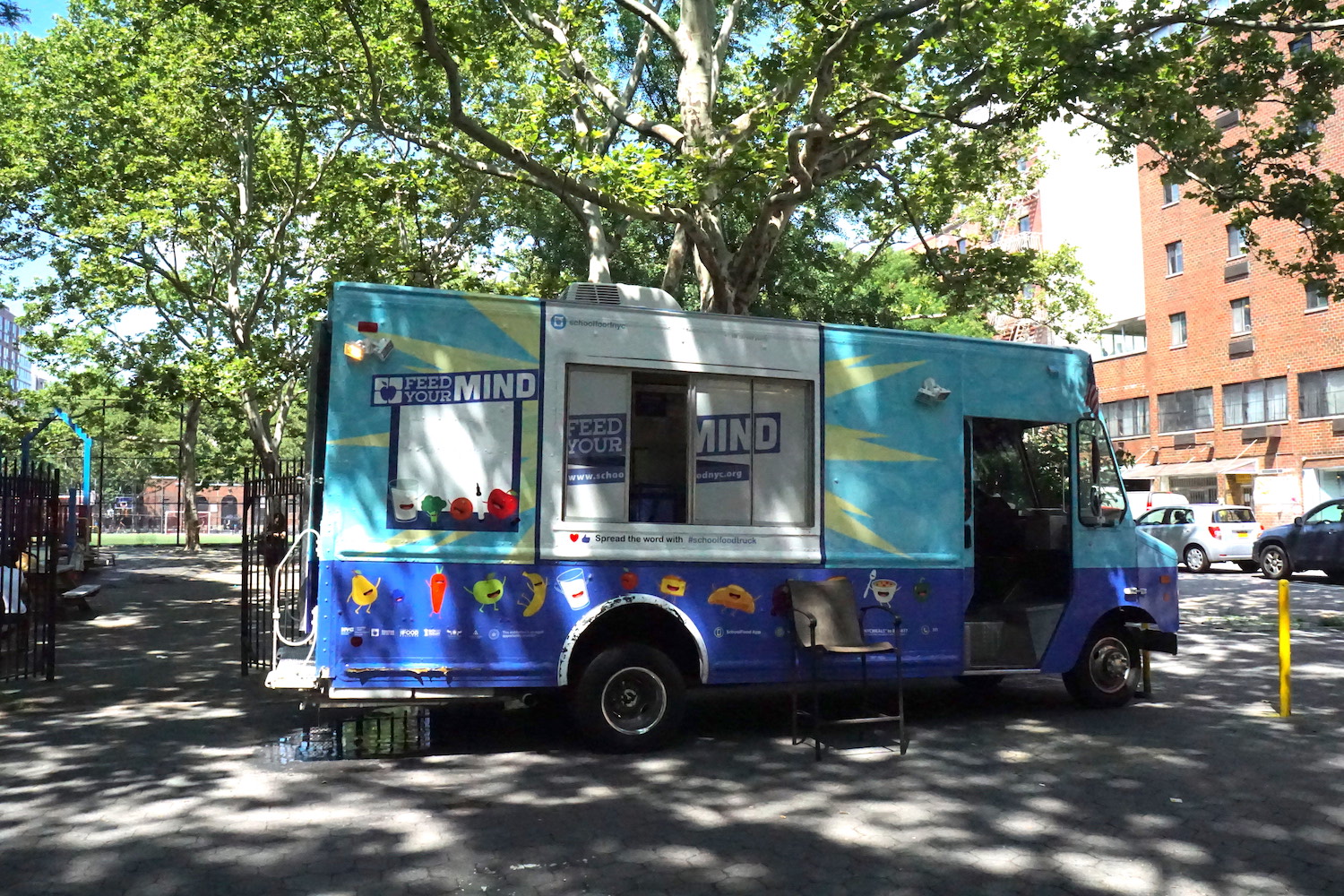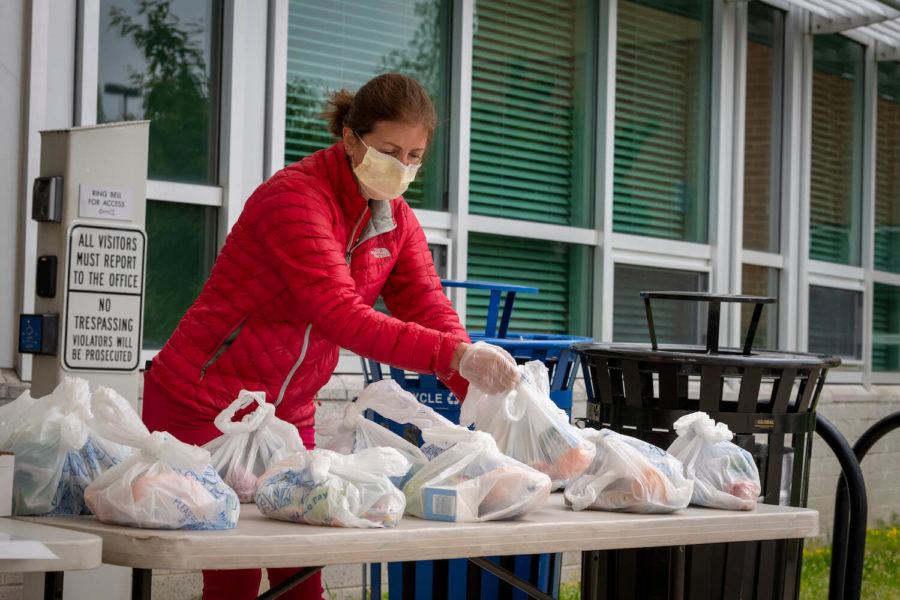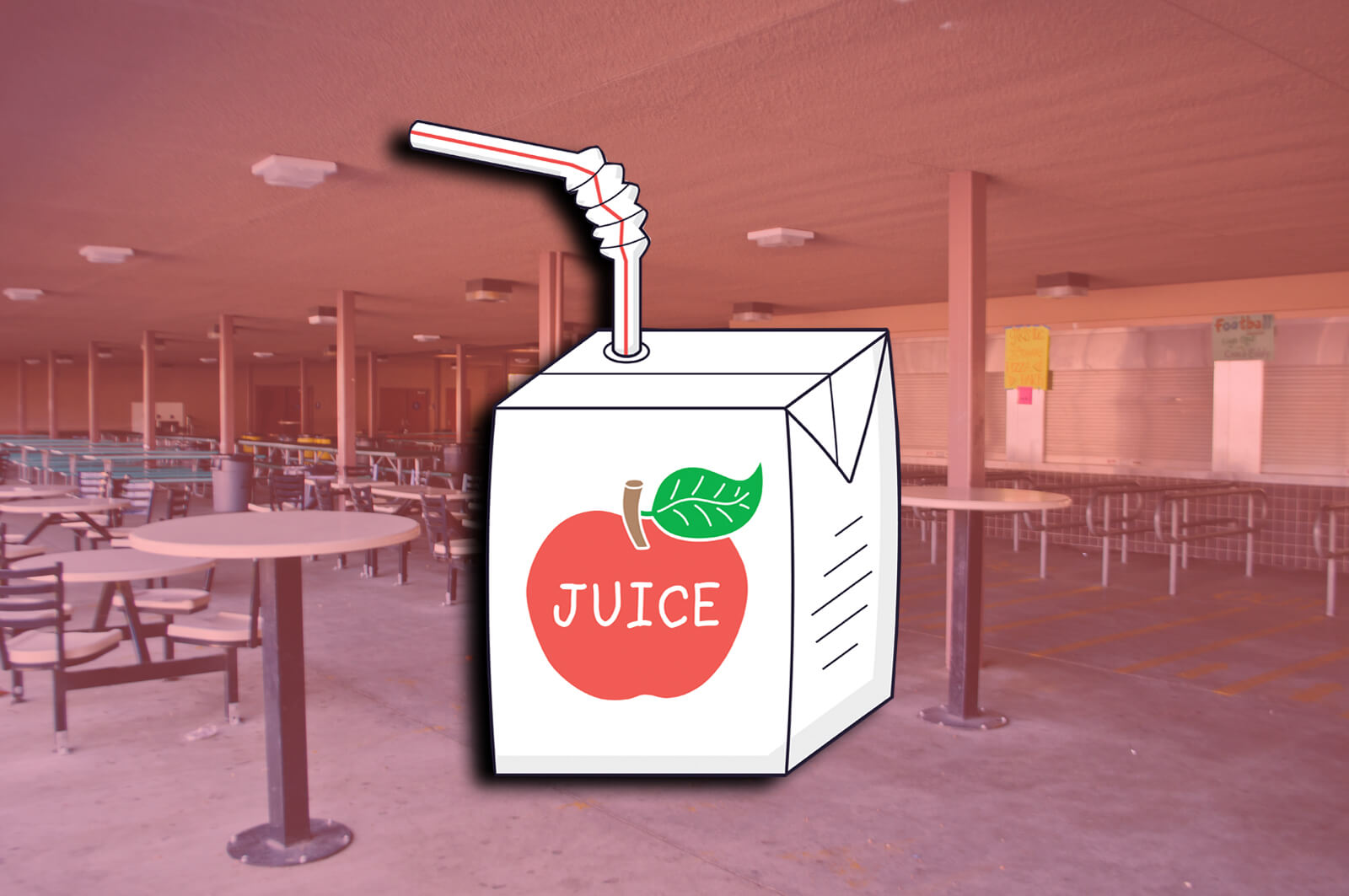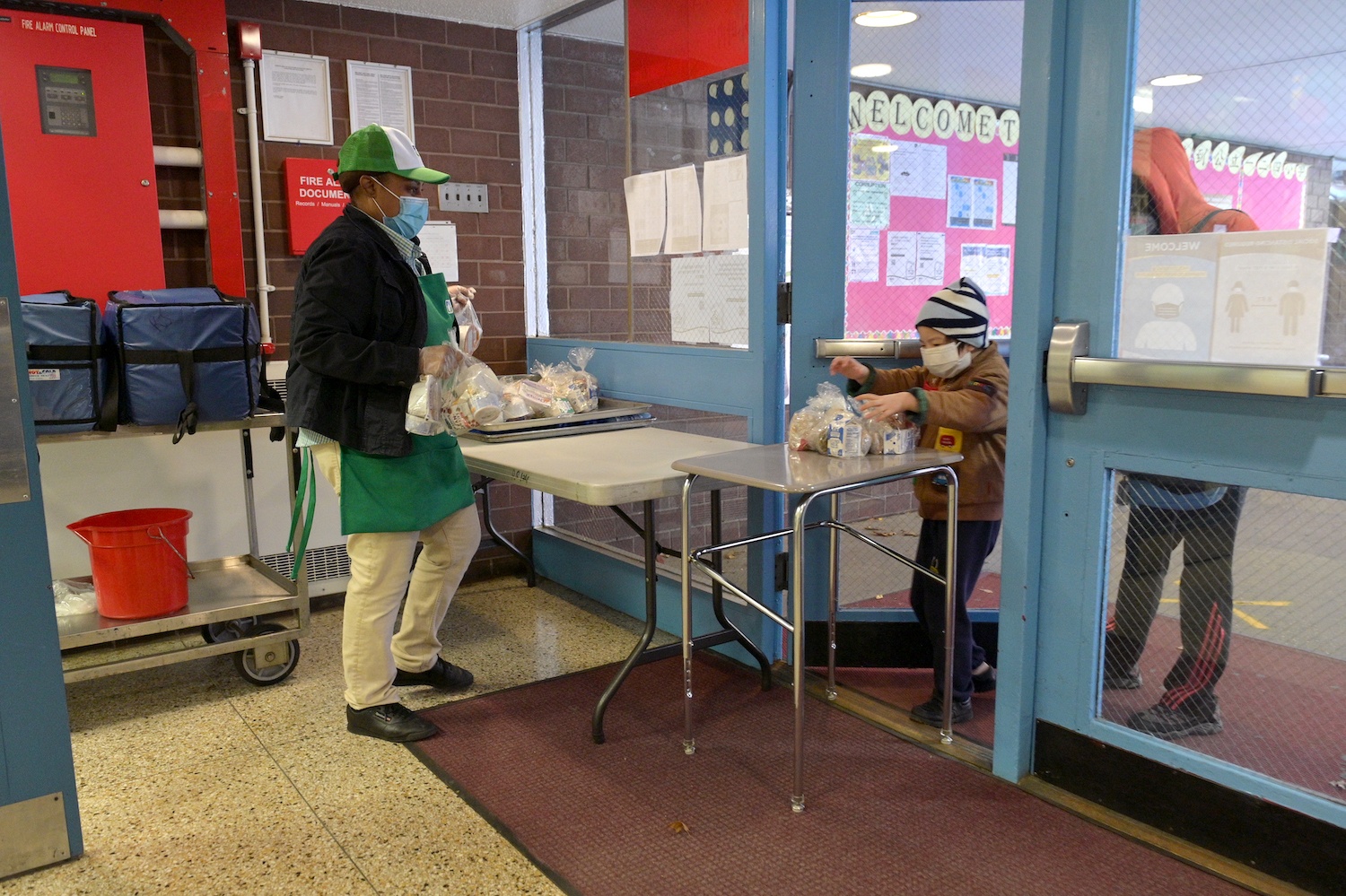
Michael Loccisano/Getty Images
The policy would echo similar efforts in cities like New York, Boston, and Chicago.
Last spring, as Congress scrambled to make it easier for cafeterias to adapt to the curbside era, it waived limitations on school meals that effectively allowed all schools to provide free food for students, regardless of income. Those flexibilities are scheduled to last through the end of the school year.
The pivot to pickup presented a host of new challenges, but the free lunch policy allowed many newly unemployed parents to pick up meals for their children without filling out any paperwork. Now, as policymakers eye the next school year (and, hopefully, a broad return to the classroom), some are hoping to see the change made permanent. In California, State Senator Nancy Skinner introduced a bill this week that would make school meals free for all public school students and shift schools’ considerable buying power to purchase more fresh food and better support local farmers.
Universal school lunch is not a new idea. Cities like New York, Boston, and Chicago have had the policy in place for years. But if the bill passed, California would be the first state to implement the change. At the same time, support for a similar policy is growing at the federal level: The School Nutrition Association (SNA), an organization that represents school food professionals, issued a position paper last month calling on Congress to consider the issue.
“Once this pandemic passes us, we’re going to continue to face more families struggling in the aftermath of the pandemic, and it’s going to be more important than ever that we make sure children have ready access to healthy school meals.”
“It’s an idea whose time has come,” said Diane Pratt-Heavner, director of media relations at SNA. “We’ve had a pilot, we’ve seen it work successfully throughout the pandemic, families have adjusted to the change, and the need now is greater than ever. Once this pandemic passes us, we’re going to continue to face more families struggling in the aftermath of the pandemic, and it’s going to be more important than ever that we make sure children have ready access to healthy school meals.”
The immediate benefits of universal school lunch are obvious: The policy would eliminate school lunch debt, which can prevent students from graduating and send debt collectors after parents. It would ensure that all students can eat breakfast and lunch at school, regardless of whether their families have completed the necessary paperwork. And it would eliminate any stigmas associated with signing up for free or reduced-price meals at school.
In New York City, where lawmakers made meals free for all in 2017, the policy has been linked to higher test scores equivalent to six to 10 weeks of learning. Researchers have also found that the program benefited students whose families made just enough money to be disqualified from receiving free meals in the past. The same study found no link between school food and attendance or obesity rates.
By combining federal money with additional funding from the state, bill sponsors see the program as an opportunity to support climate-friendly agriculture and ensure that farms who sell to schools pay their workers a living wage.
Yet bill sponsors in California see the potential for universal school lunch to do even more. By combining federal money with additional funding from the state, they see the program as an opportunity to support climate-friendly agriculture and ensure that farms who sell to schools pay their workers a living wage. Better food at school, they argue, would cut down on food waste and improve students’ health in the long term.
“From our vantage point, this crisis is a terrible thing to waste,” said Kat Taylor, founder of the TomKat Ranch Educational Foundation and a member of the School Meals for All Coalition. “We can use this to create a more distributed, equitable food system that recognizes the incredible value that our 70,000 farms and ranches bring to California’s economy and well-being.”
The bill Skinner introduced is a spot bill, and it’s scant on details. It’s unclear precisely how much the new system would cost California taxpayers or what kinds of food-purchasing provisions it might include. Taylor said the coalition is prepared for the process to take one to three years.
Still, the possibility of rethinking school meals has drawn enthusiasm from 20 co-authors and supporters ranging from the Natural Resources Defense Council (NRDC) to the California Association of Food Banks. “The more we can create stable markets for producers between farms and schools and institutions, the stronger those regional food systems will be,” said Lena Brook, senior advocate and director of food campaigns at NRDC.


